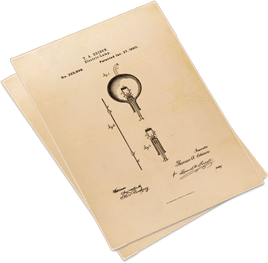It’s become easy, perhaps too easy, to submit an application to register a trademark on your own. You can fill in and submit an application for U.S. registration here. It takes the Trademark Office several months to examine the application.
In that time, you probably invested in packaging, promotional materials, a website, and advertising, perhaps even made sales. What will you do when your trademark application is refused? If you think you want to go it alone, you’ll at least want to know what criteria an examiner uses to decide whether your mark can be registered. Althought we don’t recommend you do
So, here they are:
Marks merely descriptive of some quality or characteristic of the goods or services listed in the application. Words “primarily, merely” used as surnames may be refused registration on Principal Register, relegated to the Supplemental Register, a weaker form or registration.
There are marks that cannot be registered as a matter of law:
Marks that appear to be deceptive and suggest a false connection with public persons or institutions may be refused. A mark that represents the flag or symbol of a nation or government institution, domestic or foreign, may be refused. The name of a living individual without that person’s consent may be refused.
Marks used with goods or services unlawful under federal law may not be registered. The name of a deceased president will be refused while the president’s widow or widower still lives. For the time being, words and devices seen as “immoral” or obscene are refused or at least held in suspension. Although you can register a mark that “disparages” persons, peoples, and institutions.
There is the concept of marks “confusingly similar” to any of the millions of already registered and applied-for marks. You would probably not expect to be able to register STARBUCKS for coffee or coffee shop services. What about STIRBACKS café or BUCKSTAR coffee liqueur?
“Confusingly similar” is not exactly the same.
Confusingly similar consider whether consumers might confuse or mistake your mark for another mark, and so believe the source of your goods to be of someone else’s making. Nor is it simply visual or phonetic similarity. The meaning of words and images are considered, even meaning in translation.
Stammbaum, German for “pedigree,” would likely be refused registration for use with dog food. Or for use with pet toys, leashes, or kennel services, because of the “relatedness” of goods and services. As well as the likely consumers and markets for the respective goods and services are more factors an examiner considers in the analysis of similarity.
As in all areas of human activity, the fact that something is possible and made easy does not necessarily mean that doing the thing on your own is either practical or wise. It’s not easy to come up with that perfect “name” for your product or business in the first place. Putting that much effort and emotional energy into the process of branding, it’s a reasonable next step.
Gain some level of confidence that you will ultimately have exclusive rights in your brand by getting your trademark registered. The way to gain that confidence before you apply for registration is a trademark search. Whether you do a search yourself or engage a professional to do it, search first and find out what the risks are.


